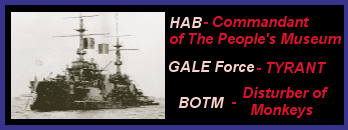CC wrote:Because speed is not the be all and end all perhaps?
Speed along with bombload are the primary factors in strategic bomber design. If you fly faster, you get to your targets faster, and are much harder for the defense to catch.
But that doesn't look like high altitude anti-flash white. Looks more like camouflage to me.
Looks like Anti-Flash White
The first mockup of the B-1Aa built in 1971 was in anti-flash white.
The first three B-1As were painted in antiflash white; and only the fourth was put into a desert camouflage scheme.
The same AMSA studies you cite for low altitude penetration also showed that high altitude supersonic capability allowed greater flexibility and reduced vunerability while transiting lightly defended areas quickly (like say....siberia)
Which is good with a plane that is designed for Mach 2 performance. It does not however mean that it would have attempted to penetrate in that manner.
Considering the B-52 fleet only went to low altitude penetration when they had become totally outclassed by soviet air defenses...I'd say yes, the B-1A would penetrate high and fast. Considering that everyone, when they were going against a third rate power with knockoff soviet air defense (Iraq) in 1991 went to high and fast after a lot of unexpected low level losses....
Yes, I'm sure that a radar with a range on the order of two miles, directed downwards, is a great beacon. Or not.
You can detect a radar much further away than it can detect you. Inverse Square Law. Plus it can't be totally downwards looking. It has to look well ahead of the flightpath, because at Mach 0.85 penetration on the deck, you need advance knowledge of what is ahead of you.
And of course, the Soviets had masses of sophisticated EW gear lying about everywhere for the purpose of ensnaring American bombers this way, right?
To my knowledge, such a kill has happened precisely once, when an Iraqi Mirage F1 was diving on an EF-111 Raven. That would seem to indicate that kills of that nature are more in the realm of Murphy's Law rather than a routine thing.
At the altitudes and speeds that low altitude penetration takes place at, a discrepancy of 50-150 feet caused by jamming is enough. Splat.
Plus we get all the nice other tricks like:
1.) Cables Strung Across Valleys.
and
2.) Radar Reflectors....easy to make... they're just three circular metal disks welded together in the x y and z planes with the center of each circle common to all three. Then you put it into a light plastic case. Then you put it on a power line....radar sees reflector, sees "ground", commands a pullup, which exposes it to enemy radar and other fun things.
The source you quoted is a congresscritter?
I have no idea. However, congressmen just love to quote total R&D and tooling prices backloaded into aircraft costs as excuses to kill a program.
How do you propose that the B-1A detect GCI controlled Foxbats 140 miles away? That'd take a rather powerful air to air radar system, which I've never heard of being mounted on the B-1A. Wouldn't that actually exceed the range of the AWG-9 then in service?
Uhm. You are familiar with ECM, and the Inverse Square Law? The B-1A's ECM suite would detect the Foxbats OR the the ground radar and provide a directional hack on their locations (one bonus of high speeds, it makes triangulation on radar sources much easier) long before the enemy radar would be able to get a clear return on the B-1A.
Then it's a matter of sending a SRAM towards the radar 100+ miles away....which is easily workable with a 50,000 ft Mach 2 profile, as the SRAM can fly further than it would from a low altitude launch.
Splat. No more radar, and the Foxbats are back to their own radars.
If the soviets get cute, and try AWACS, well then, that kills a low altitude penetration profile just dead...due to a nice thing called "look down capability"
I'd love to see your source for that. Presumably you got that from an aeronautics text or perhaps a primer on surface to air missiles?
It's based on Stuart's statement that
To give you some idea of the magnitude of the challenge facing SAM defenses, a SAM capable of getting a 50 percent Pk (probability of a kill) against a B-70 would have to have a maximum speed of Mach 9, a range of over 250 miles and a maximum ceiling in excess of 200,000 feet.
And might I suggest giving credit where credit is due with regards to that post on CVV?
I did put it in quotation marks, anyway. I found that on
Secret Projects Co Uk



